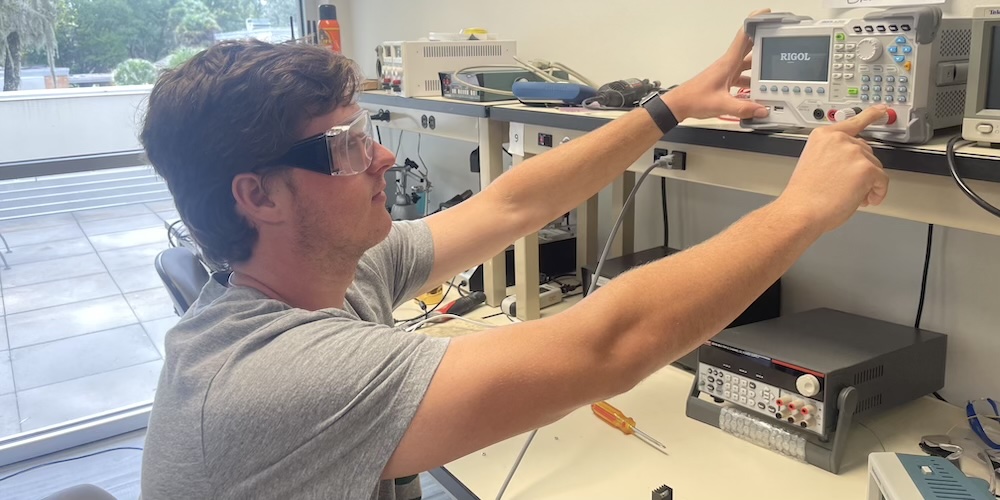Jacksonville University junior Evan Sharp, a mechanical engineering student in the
Davis College of Business and Technology, has always been intrigued  by aircraft and military technology.
by aircraft and military technology.
So much so that it led him to conduct his latest research project in aircraft radar stealth. Although this isn’t his first research project, it is his first research project published recently as the sole author in a refereed journal, the Journal of Applied Mathematics and Physics.
Sharp worked on his research as a sophomore in Dr. Murat Tiryakioglu’s Statistical Design of Engineering Experiments class. The professor of engineering says it’s very rare for an undergraduate student to be published in an academic journal, let alone as it’s only author.
“It’s very uncommon, almost unheard of, for an undergraduate student to have a paper published in an academic journal as the sole author,” said Tiryakioglu. “What makes Evan’s case even more impressive is that he did all this work as a sophomore in my class. I could not be prouder of him.”
Radar stealth is the technology that militaries use to hide their own aircraft and detect enemy aircraft in aerial combat. Sharp’s research tested the impact of different shapes and sizes of material on the resulting detectability of aircraft on a radar.
“In this field, detectability is often referred to as radar cross section, or RCS. I tested how the number of faces on a small component, how curved the edges were, the slant of the faces, the distance from the radar detector, and the curvature of the corners on the components could potentially reduce or increase the RCS of the studied components,” he said.
Sharp spent four months hoping to find a critical interaction point that would drastically reduce or increase the radar cross section. Through trial and error, he tested how the number of faces on a small component, how curved the edges were, the slant of the faces, the distance from the radar detector as well as the curvature of the corners on the components and how they could potentially reduce or increase the RCS of the studied components.
Although Sharp didn’t find a critical interaction point, his findings were in line with the general understanding of radar physics, he notes.
“I found that attributes that tend to reduce the RCS, or make a component less detectable, also tend to increase the variability of the RCS,” he explained. “This means that not only do these attributes make aircraft less detectable, but they can also amplify any natural error present in the experimentation process.”
He says his research findings will allow engineers to better understand how certain variables may interact to create better aircraft stealth technology.
“His results are significant, and I expect them to lead to more detailed research in the near future,” Murat stated.
In addition to conducting research, Sharp is an active member of the JU campus community. He’s a student-athlete with the men’s lacrosse team and co-founder and president of the STEM Research Association as well as a member of the American Society of Mechanical Engineers, Society of Physics Students, Honors Society, Student Government and Phi Kappa Phi.



